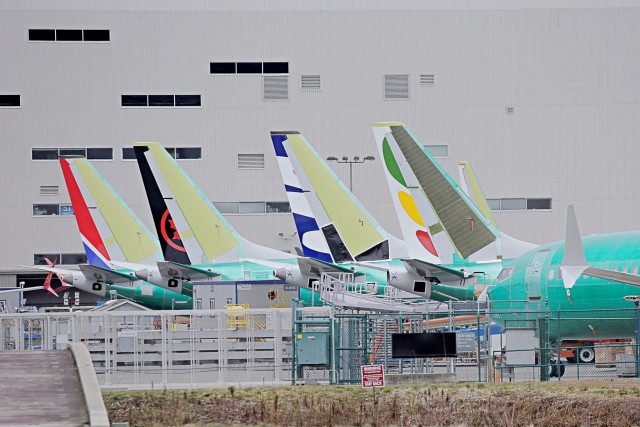Boeing announced that it fixed the errors in its 737 Max 8 plane models and upgraded its software to further boost safety and improve the passengers' overall flying experience. The fixes were revealed to the public in an effort to restore faith after two fatal crashes that claimed the lives of 346 people in a separate flight, in a span of just five months.
"We're working with customers and regulators around the world to restore faith in our industry and also to reaffirm our commitment to safety and to earning the trust for the flying public," CNN quoted Boeing vice president on product strategy and development, Mike Sinnett, as saying when it previewed the changes in 737 Max to pilots, the press and regulators at its factory in Renton, Washington.
Following these incidents, Boeing 737 Max 8 jets were grounded worldwide and caused the aircraft maker to lose a huge chunk of stock shares. An investigation over the safety of the plane was also launched and Boeing could be criminally held liable for the crashes if the probe will yield evidence that it has shortcomings when it released the planes for commercial use.
Now, amid the probes, Boeing continues to build the 737 Max model and fixed the jets to prevent further accidents. The company is also campaigning to assure airlines, regulators, pilots, plane crews and passengers that this type of plane is safe.
The first step was to upgrade the 737 Max 8's software that was said to be faulty during the initial investigations after the Ethiopian Air flight crashed early this month. Boeing is sharing how it will improve and repair the troubled jet to let everyone know that it has taken steps to ensure safety when flying.
In any case, the Manoeuvring Characteristics Augmentation System or MCAS is a software that was designed to prevent the Boeing 737 Max from stalling. It quickly responds to sensors when the plane's nose is climbing at an angle that is too steep.
In the Lion Air flight, it was said that this software malfunctioned and pushed the plane's nose down more than 20 times. Apparently, as the plane continues to point its nose down, the pilot struggled to stabilize the plane before it finally crashed into the sea. The recent Ethiopian Air crash was said to have experienced a similar situation so the investigation focused on the MCAS as it seems to be the cause of the accidents.
The MCAS software has been upgraded to fix the issues and as shared on Cnet, here is the list of improvements that Boeing made in 737 Max flight controls:
- Rather than just one sensor, the MCAS will now receive data from both angles of attack sensors.
- The MCAS system will be disabled and not push the plane's nose down if it received conflicting or different signals from the two attack sensors.
- Boeing will install an indicator in the flight control display so that pilots will be alerted if the angle of attack sensors disagree.
- All pilots of Boeing 737 Max planes must receive extra training so they will know full well how the MCAS system works. This will also teach them how to deactivate the software if an issue arises.
Boeing will be sending the software upgrades for MCAS and the details for pilot training to the Federal Aviation Administration (FAA) for certification approval. Once approved, the company will distribute the update to airlines with 737 Max jets.
Finally, Boeing stated that the installation of the updates can take a few days and more time is needed for testing and training of pilots. Experts stated that the process could last from six to 12 weeks before the grounded jets are able to fly again.






